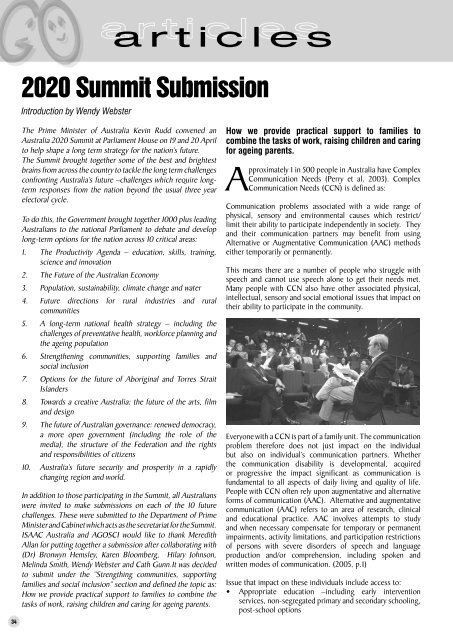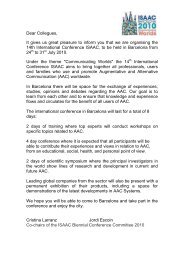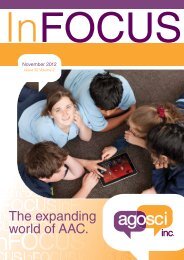May 2008 Edition - agosci
May 2008 Edition - agosci
May 2008 Edition - agosci
You also want an ePaper? Increase the reach of your titles
YUMPU automatically turns print PDFs into web optimized ePapers that Google loves.
articles articles2020 Summit SubmissionIntroduction by Wendy Webster34The Prime Minister of Australia Kevin Rudd convened anAustralia 2020 Summit at Parliament House on 19 and 20 Aprilto help shape a long term strategy for the nation’s future.The Summit brought together some of the best and brightestbrains from across the country to tackle the long term challengesconfronting Australia’s future –challenges which require longtermresponses from the nation beyond the usual three yearelectoral cycle.To do this, the Government brought together 1000 plus leadingAustralians to the national Parliament to debate and developlong-term options for the nation across 10 critical areas:1. The Productivity Agenda – education, skills, training,science and innovation2. The Future of the Australian Economy3. Population, sustainability, climate change and water4. Future directions for rural industries and ruralcommunities5. A long-term national health strategy – including thechallenges of preventative health, workforce planning andthe ageing population6. Strengthening communities, supporting families andsocial inclusion7. Options for the future of Aboriginal and Torres StraitIslanders8. Towards a creative Australia: the future of the arts, fi lmand design9. The future of Australian governance: renewed democracy,a more open government (including the role of themedia), the structure of the Federation and the rightsand responsibilities of citizens10. Australia’s future security and prosperity in a rapidlychanging region and world.In addition to those participating in the Summit, all Australianswere invited to make submissions on each of the 10 futurechallenges. These were submitted to the Department of PrimeMinister and Cabinet which acts as the secretariat for the Summit.ISAAC Australia and AGOSCI would like to thank MeredithAllan for putting together a submission after collaborating with(Dr) Bronwyn Hemsley, Karen Bloomberg, Hilary Johnson,Melinda Smith, Wendy Webster and Cath Gunn.It was decidedto submit under the “Strengthing communities, supportingfamilies and social inclusion” section and defined the topic as:How we provide practical support to families to combine thetasks of work, raising children and caring for ageing parents.How we provide practical support to families tocombine the tasks of work, raising children and caringfor ageing parents.Approximately 1 in 500 people in Australia have ComplexCommunication Needs (Perry et al. 2003). ComplexCommunication Needs (CCN) is defi ned as:Communication problems associated with a wide range ofphysical, sensory and environmental causes which restrict/limit their ability to participate independently in society. Theyand their communication partners may benefit from usingAlternative or Augmentative Communication (AAC) methodseither temporarily or permanently.This means there are a number of people who struggle withspeech and cannot use speech alone to get their needs met.Many people with CCN also have other associated physical,intellectual, sensory and social emotional issues that impact ontheir ability to participate in the community.Everyone with a CCN is part of a family unit. The communicationproblem therefore does not just impact on the individualbut also on individual’s communication partners. Whetherthe communication disability is developmental, acquiredor progressive the impact significant as communication isfundamental to all aspects of daily living and quality of life.People with CCN often rely upon augmentative and alternativeforms of communication (AAC). Alternative and augmentativecommunication (AAC) refers to an area of research, clinicaland educational practice. AAC involves attempts to studyand when necessary compensate for temporary or permanentimpairments, activity limitations, and participation restrictionsof persons with severe disorders of speech and languageproduction and/or comprehension, including spoken andwritten modes of communication. (2005, p.1)Issue that impact on these individuals include access to:• Appropriate education –including early interventionservices, non-segregated primary and secondary schooling,post-school options





